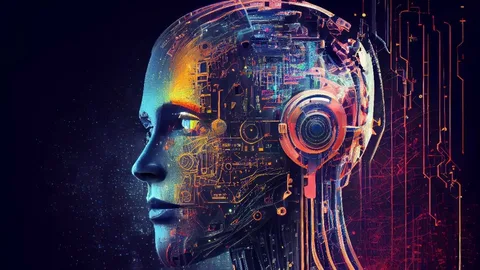Artificial Intelligence (AI) is often associated with self-driving cars, facial recognition, and robotics — but one of its most creative and impactful uses can be found in a place many don’t expect: video games.
Over the last two decades, AI has transitioned from simple enemy behaviors to complex systems that influence how stories unfold, how characters respond, and how worlds adapt. The result is a gaming experience that feels smarter, more personal, and often, more unpredictable.
The Early Days of Game AI
In the early days of gaming, AI was rule-based. Enemies moved on pre-set paths or responded to very specific triggers. Think of ghosts in Pac-Man or goombas in Super Mario Bros. These systems were efficient but static.
As games grew more complex, so did the expectations around in-game intelligence. Players wanted enemies that flanked, strategized, or retreated when outmatched — leading to the first wave of adaptive AI seen in titles like Halo or F.E.A.R.
Dynamic Environments and Procedural Design
Today, AI helps shape entire game worlds. In survival and sandbox games, AI often governs ecosystems, weather patterns, or the behaviors of wildlife and NPCs. A great example is Red Dead Redemption 2, where background characters go about daily routines whether the player is watching or not.
AI also powers procedural generation — used in games like No Man’s Sky or Minecraft — where worlds, levels, and scenarios are generated dynamically. This ensures no two experiences are exactly alike, pushing replayability to new levels.
Interestingly, platforms designed around randomness and probability mechanics, such as homebet88, reflect similar algorithmic thinking — blending chance with structured engagement in ways that appeal to different kinds of players.
Smarter Companions and Enemies
Modern AI isn’t just about world design. It’s also about behavior modeling. Today’s in-game companions aren’t just helpful — they’re emotionally reactive. Games like The Last of Us or Mass Effect use AI to make allies behave believably in combat and in conversation.
Meanwhile, enemy AI in stealth or strategy games can learn from your patterns. In some titles, AI even changes tactics mid-game, keeping players on their toes. This shift from scripted to reactive design has dramatically increased both challenge and immersion.
AI in Narrative and Dialogue
One of the more experimental frontiers is using AI to power branching storylines and dynamic dialogue. Titles like Detroit: Become Human or Disco Elysium already offer hundreds of player-driven decisions, and future games may take this further by using natural language processing and machine learning to generate story paths on the fly.
Imagine a world where no two players hear the same dialogue, where quests change based on subtle behavioral cues, or where the game itself rewrites its ending depending on emotional tone. This isn’t science fiction — it’s already in development.
Ethical Questions and Creative Potential
As AI gets more involved in designing player experiences, questions emerge about authorship, bias, and control. Who’s really telling the story when the game writes itself? Can algorithms capture emotional nuance? And how do we prevent AI from reinforcing harmful stereotypes or player behaviors?
Despite these concerns, many believe AI can be a collaborative tool — not a replacement for human designers, but a partner in creating richer, more responsive worlds.
Final Thoughts
Artificial Intelligence has quietly become one of the most transformative forces in video game development. It shapes gameplay, drives narratives, and deepens immersion — all while evolving behind the scenes.
As the tech matures, we’re likely to see games that feel less like coded systems and more like living, thinking entities. The future of gaming, it seems, may not be human — but it will still be deeply creative.


